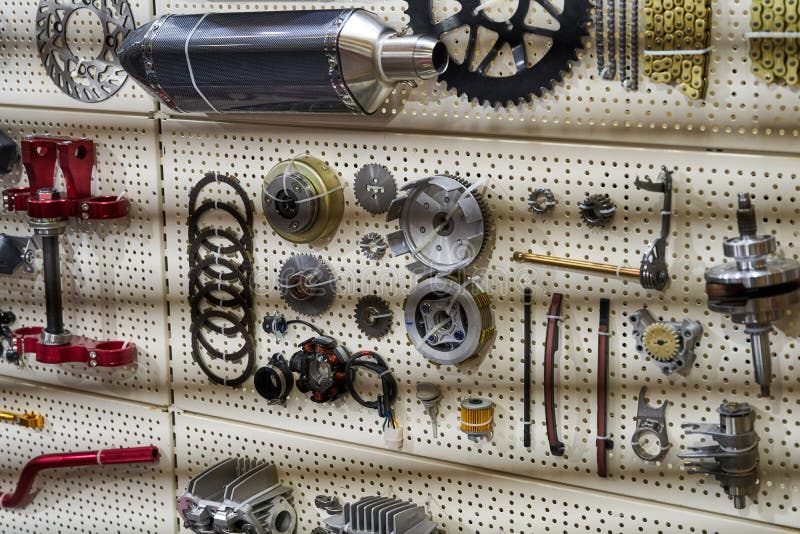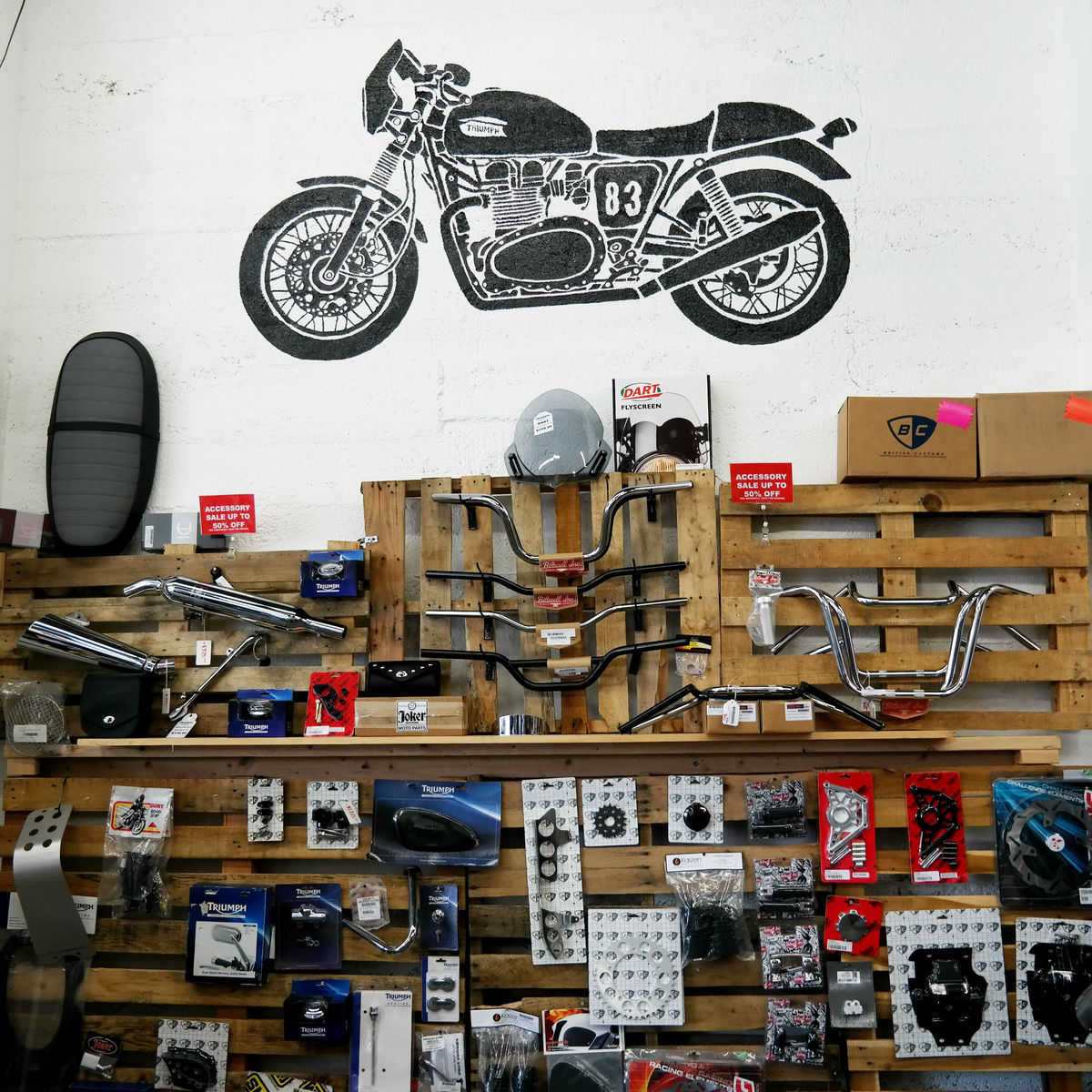Discover Quality Moto Parts NZ for All Your Motorcycle Needs
Discover Quality Moto Parts NZ for All Your Motorcycle Needs
Blog Article
Grasping Motorcycle Gears: Just How to Enhance Your Riding Experience
In the realm of motorcycling, mastering the art of gear adjustment is crucial for improving your riding efficiency. Appropriately recognizing and utilizing bike equipments can considerably affect fuel, control, and acceleration efficiency, transforming a typical experience right into a smooth, electrifying trip.
Recognizing Equipment Mechanics
Exactly how do the ins and outs of gear auto mechanics influence bike efficiency? At the core of motorcycle dynamics, equipment mechanics play a pivotal role in converting engine power right into motion, inevitably determining rate and control. Gears, carefully crafted elements, enable cyclists to enhance torque and speed, guaranteeing a smooth change through different terrains and rates. The equipment ratios, very carefully made, identify the connection in between engine revolutions and wheel turns, affecting acceleration and gas effectiveness.
Comprehending gear technicians starts with recognizing the importance of the gearbox, which houses multiple equipments of varying dimensions. These gears engage through a process called meshing, where teeth of various gears engage to transfer power. The precision of this communication is vital; any kind of imbalance or damage can cause inefficient power transfer, impeding efficiency. Additionally, the setup and dimension of gears affect the motorbike's capability to take care of different tons and speeds.
Additionally, the principle of gear shifting is integral to optimizing performance. Smooth and timely shifts make sure that the engine runs within its ideal power band, protecting against unnecessary stress and improving long life (motocross parts nz). By understanding these mechanical ins and outs, motorcyclists can attain a harmonious blend of performance, control, and power, raising their riding experience
Timing Your Shifts
Shift timing proficiency is essential for enhancing motorbike efficiency and boosting the riding experience. Effectively timed changes make sure that the engine operates within its optimal power band, which is important for keeping control, accomplishing smooth acceleration, and making certain the long life of the motorcycle. Cyclists have to establish an user-friendly feeling of when to move equipments, which involves recognizing the connection in between engine transformations per min (RPM) and rate.
To understand change timing, pay very close attention to the engine's audio and really feel, as these provide important ideas about when to alter gears. The optimal change point commonly takes place when the engine approaches the top variety of its power band without reaching the redline. Changing also early can result in an absence of power, while moving as well late may cause unneeded engine strain
In addition, road conditions and riding design influence change timing. In comparison, throughout freeway riding, fewer shifts at higher rates can be more suitable.
Enhancing Gas Effectiveness
While grasping motorcycle gears is critical for efficiency, boosting gas performance is similarly essential for both ecological and financial reasons. Optimal fuel usage not only reduces functional expenses yet likewise decreases the eco-friendly impact of riding. To accomplish womens motorcycle helmets this, one need to recognize the elaborate relationship in between equipment selection and engine performance.
Riding in a higher gear at lower speeds can lead to engine hauling, which is damaging to both fuel economic situation and engine wellness. On the other hand, riding in reduced equipments at high rates results in unneeded fuel usage.
Additionally, routine upkeep plays a pivotal duty in fuel performance. Making certain that the bike is well-tuned, with clean air filters and correctly pumped up tires, can lower and enhance aerodynamics gas wastefulness. Additionally, embracing a riding style that accepts progressive acceleration and smooth deceleration can add to better gas economy.

Strategies for Smooth Transitions
Attaining smooth equipment changes is basic to boosting the riding experience and ensuring the longevity of a motorbike's transmission system. Proper gear shifting not just contributes to a seamless experience yet additionally reduces damage on the mechanical parts. To master the art of smooth transitions, bikers must concentrate on a couple of crucial methods.
Second of all, clutch control plays a pivotal duty. Involving and disengaging the clutch efficiently calls for technique. The clutch lever need to be launched progressively, enabling a seamless transfer of power from the engine to the wheels without causing a jolt or abrupt activity.

Adjusting to Road Conditions
Navigating diverse roadway conditions is a critical skill for any type of motorcyclist intending to preserve control and safety and security. Whether you're riding on damp surface areas, crushed rock roads, or browsing sharp turns, your capability to adapt your equipment usage and riding strategy is extremely important. Comprehending how to readjust your equipments appropriately can considerably affect traction and stability, guaranteeing a more secure journey.
On damp roads, it is a good idea to keep higher equipments to decrease torque and minimize wheel spin. This approach aids maintain hold on unsafe surface areas, allowing for smoother acceleration and slowdown. In comparison, when riding on crushed rock or irregular surface, lower gears are preferable. Reduced equipments give better control and permit you to react even more quickly to unexpected changes in the road surface.
Sharp curves demand exact equipment monitoring to stabilize rate and control. More hints Downshifting prior to entering a contour can assist maintain energy while making sure the bike stays stable throughout the turn. Constant method in diverse conditions enhances Continue your capacity to predict and react to modifications in roadway texture and slope.
Final Thought
Understanding motorbike equipments significantly boosts the riding experience by boosting acceleration, fuel, and control effectiveness. An extensive understanding of gear technicians and precise shift timing ensures the engine runs within its optimum power band, while smooth changes with effective clutch and throttle sychronisation increase comfort and performance. Adjusting equipment option to various road problems, such as making use of higher equipments on damp surface areas and reduced equipments on crushed rock, further improves handling and security. Ultimately, these abilities boost the total trip.
Recognizing equipment auto mechanics begins with identifying the relevance of the gearbox, which houses multiple equipments of varying dimensions. These gears connect via a process understood as meshing, where teeth of various equipments involve to transmit power (motorcycle shop). Gentle changes to the throttle throughout equipment changes can prevent jerky activities and keep a consistent riding pace
Whether you're riding on damp surface areas, gravel roadways, or navigating sharp turns, your capability to adapt your gear usage and riding technique is extremely important. Adapting gear choice to different road conditions, such as using higher equipments on damp surface areas and lower gears on gravel, additional enhances handling and security.
Report this page